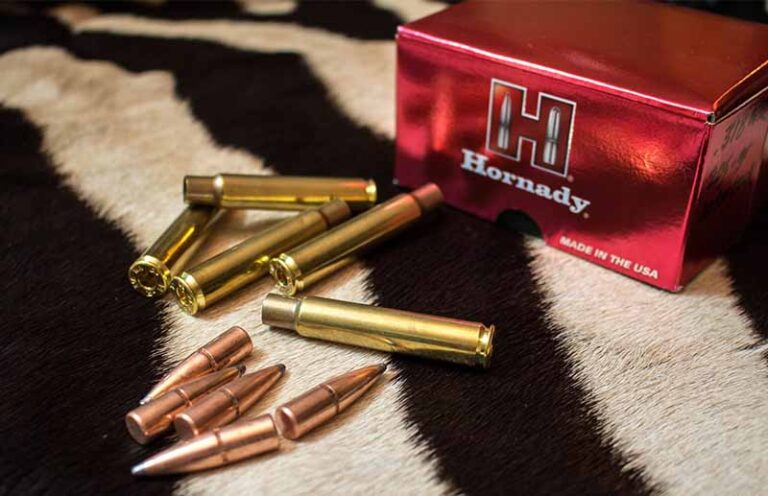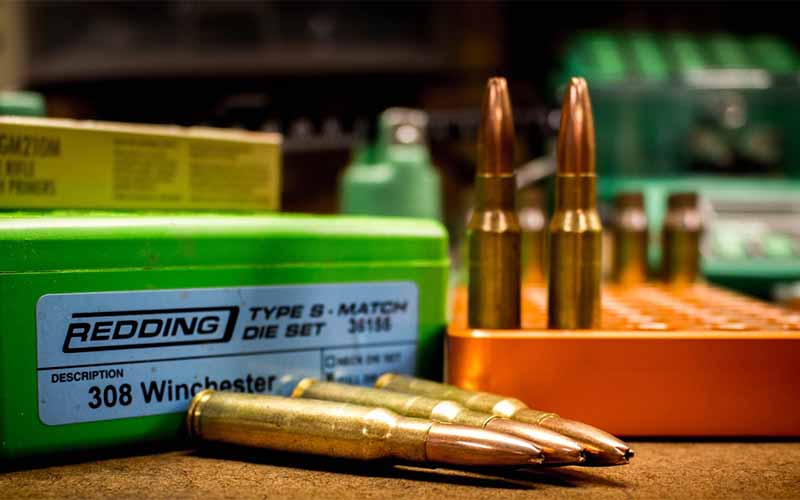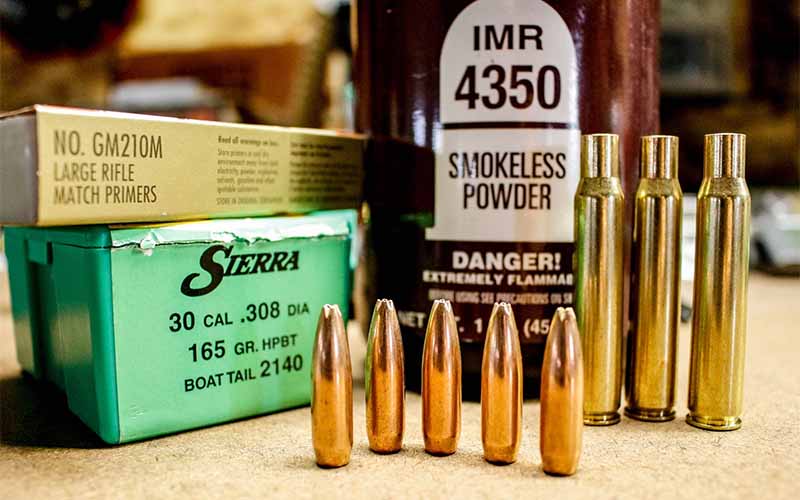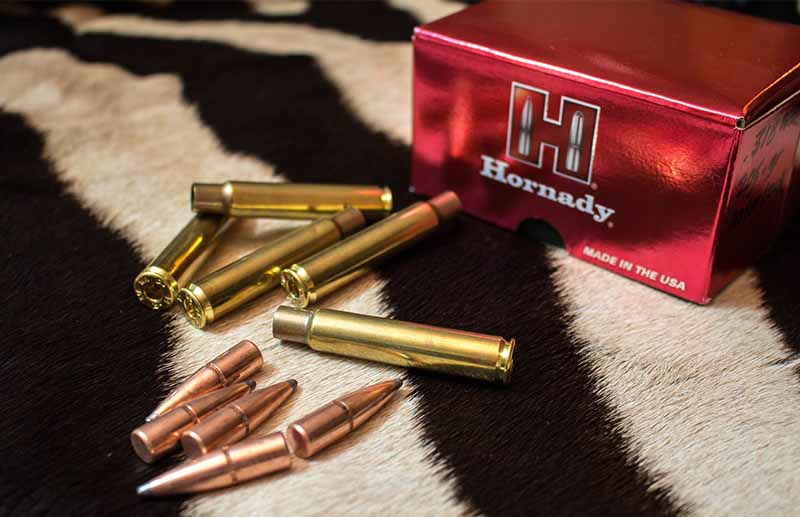
The case for reloading time-tested and oddball cartridges and how to best do it when components run low.
“I can’t find primers.”
“I can’t get the powder I need.”
“There are no bullets available for my gun.”
Over the past three years, I've heard these statements—or something very similar—more times than I can count. It has been so difficult in some instances that several folks I know have given up on reloading altogether. We’re still facing a component crunch—although the supplies of factory ammunition seem to be slightly more plentiful—and reloaders certainly aren’t happy about this fact.
Handloading has long been a solid means of fueling those firearms chambered for the oddball cartridges, or has served as a means of making high-volume shooting much more affordable. Those facts might have changed over the past couple of years, with the cost of reloading components radically increasing (if you can get them at all).

When the crunch of 2013 hit, oddball component stuff was all that was available. For example, I could find 8mm-diameter bullets, and .348-inch-diameter bullets, but no .30-caliber stuff at all. This time around, even the oddballs have dried up. Watching the pattern of returning reloading components, the attention has been paid to the most popular items first, with any of the oddball cartridge stuff being put on the back-burner … in some cases indefinitely.
It makes sense, therefore, to have firearms chambered for a couple of the classic cartridges in your safe so there will be something for you to shoot or carry as the ammo and components make their way back to the shelves. The same can be said for powder selection; I want to have several of the more universal and obtainable selections on hand, even if they might not be the most accurate or generate the best velocities.
Which Road to Travel?
Owning a rifle in .30-06 Springfield might not be the sexiest choice, considering the plethora of magnums and specialty cartridges that have come on the scene, but it remains one of our best-selling cartridges, and .30-caliber bullets are one of the most popular among component projectiles. Though brass cases are plentiful for the .30-06, I could, in a pinch, make brass from .270 Winchester, .280 Remington or even .25-06 Remington cases.
Regarding applicable powders, I can’t think of another case that can make use of more different powders than the .30-06 Springfield; in terms of flexibility when powder has become scarce, the ought-six remains nearly universal. From the powders on the faster side like IMR 3031, to those in the middle of the burn rate chart like IMR 4064, Varget or RL-15, to powders as slow as IMR 4350 and RL-19, the .30-06 can most likely digest it. This is but one train of thought, and one could make the case for the .270 Winchester as well, though with less flexibility. The .308 Winchester, as usual, is nearly as flexible as the .30-06, though powder choices seem to be narrowed—and the same could be said for the .300 Winchester Magnum with the slower-burning powders.

In the handgun world, it’s hard to argue with the flexibility of the .38 Special and .45 ACP; in troubled times, a handloader can cast lead projectiles, and there are plenty of powder choices to keep your handguns running. A pound of Bullseye or Unique can go a long way, provided you’ve got the primers to spark those charges. And while I see the allure of a double-stacked 10mm Auto, a J-frame Smith & Wesson snubbie or a well-worn 1911 still has all the effectiveness that it did a half-century ago.
With the global pandemic, our powder supplies were not only compromised by demand, but by supply as well. When Australia shut down, we reloaders lost our supply of Varget, H4350 and Retumbo. Since that time, I've taken the steps to develop more than one load for a particular bullet; if I have enough projectiles on hand, I’ll purposely try to develop multiple loads using powders sourced from different regions of the world, so that I can always have something that gives acceptable results in my own rifles.

Is Bulk Buying the Answer?
Choosing a cartridge/caliber/bullet weight that’s probably slated to return to the market quickly is certainly a wise idea, but if you’re like me and appreciate those oddball cartridges, you’ll need to buy enough supplies to keep that rifle/handgun fed.
Bulk purchasing, when possible, is smart for a couple of reasons. I’ve found that there are differences—if subtle—in smokeless powder from lot to lot. In a conventional, single-barreled hunting rifle, these small variations can be adjusted with a few clicks of the riflescope; in a double rifle, those discrepancies will quickly show up on the target board. A big part of reloading success is keeping the variables to a minimum, so buying one large jug of smokeless powder makes more sense than several smaller bottles, as the large jug will be from the same lot.
The same can be said for projectiles: When Hornady rolls their A-Tip Match bullets off the assembly line, they offer the buyer a chance to buy up to 500 pieces. That tells me there’s something to the consistency of reloading components, and buying in big lots is the most effective means of keeping things as consistent as possible.

The flip side of the coin is that buying in bulk will keep the reloader well supplied, especially if you’re shooting one of the oddball cartridges. I absolutely love my .318 Westley Richards, both for its field performance and its connection to history, but it receives almost no attention from the manufacturers. Woodleigh Bullets from Australia made the 250-grain Weldcore softpoint and corresponding solid, but that ended when the Woodleigh manufacturing plant sadly burned to the ground last year. I’ve probably collected enough of those 250-grain Weldcores to last the rest of my hunting career, but I can’t squander them until the factory is rebuilt.
Hornady makes a .330-inch-diameter (the same as the .318 WR) 205-grain InterLock spitzer designed for the 8x56R cartridge, but it works wonderfully on whitetail deer and similar game. I’ve been able to procure about 600 pieces of the Hornady stuff, and that’ll fill in the gap for quite some time, though I cannot expect that a .330-caliber bullet will be shown the same attention as any of the .308-caliber offerings. So, for the sheer survival of the rifle, I have to buy projectiles whenever and wherever I see them. Cases can be made from plentiful .30-06 brass, and perhaps I could swage down .338-inch bullets to .330 inch, but I haven’t been that desperate.
Yet.
Editor's Note: This article originally appeared in the April 2023 issue of Gun Digest the Magazine.
More On Reloading:
- Tips For Reloading the .30-06 Springfield
- Loving Your Luger: Reloading the 9mm Luger
- Handloading: Tips For Reloading The 7mm Rem Mag
- How To: Tips For Reloading the .223 Remington
- Reloading Bench: The Inside On Reloading For The .30-30 Winchester

Next Step: Get your FREE Printable Target Pack
Enhance your shooting precision with our 62 MOA Targets, perfect for rifles and handguns. Crafted in collaboration with Storm Tactical for accuracy and versatility.
Subscribe to the Gun Digest email newsletter and get your downloadable target pack sent straight to your inbox. Stay updated with the latest firearms info in the industry.

![Best Concealed Carry Guns In 2025 [Field Tested] Wilson Combat EDC X9S 1](https://gundigest.com/wp-content/uploads/Wilson-Combat-EDC-X9S-1-324x160.jpg)


![Best 9mm Carbine: Affordable PCCs [Tested] Ruger Carbine Shooting](https://gundigest.com/wp-content/uploads/Ruger-Carbine-Shooting-100x70.jpg)
![Best AR-15: Top Options Available Today [Field Tested] Harrington and Richardson PSA XM177E2 feature](https://gundigest.com/wp-content/uploads/Harrington-and-Richardson-PSA-XM177E2-feature-100x70.jpg)
